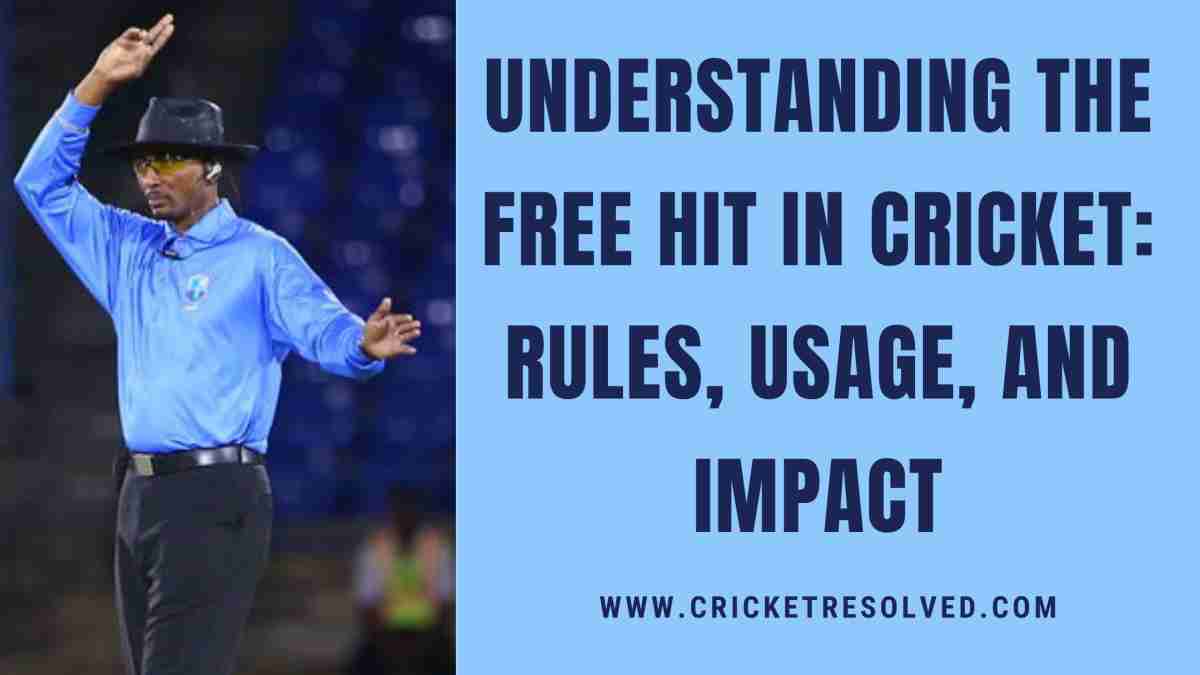
Cricket, sometimes known as a gentleman’s game, has a long history and numerous regulations that make it a fascinating sport. Various changes have been implemented throughout the years to increase the thrill and competitiveness of the game.
One such innovation is the “Free Hit” rule. This regulation gives batters a one-of-a-kind opportunity to score freely without fear of losing the wicket. This rule has not only revolutionised limited-overs cricket, but it has also brought a new dimension to the game by allowing batters to show off their attacking skills.
In this article, we will look at the free hit regulation, its purpose, the forms in which it is used, fielding constraints, run out rules, and other important aspects of this exciting feature of the game. So, let’s get started.
Explanation of the free hit rule
In cricket, the free hit is a particular delivery that comes after a no-ball. When a bowler delivers a no-ball — overstepping the crease or a waist-high ball — the next ball is deemed a free hit. It means that the batter cannot be removed by any legal method other than a run out on that delivery.
Also Read: 15+ Types of No Ball in Cricket that You Should Know!
Purpose and Significance
The addition of this rule has given a new dimension to the game. It allows batters to capitalise on the bowler’s error without fear of losing their wicket. It encourages more aggressive batting and adds excitement to the game as batters take risks and try for huge shots without fear of getting out.
Formats in Which Free Hit is Used
The free hit rule is applicable in limited-overs cricket — One Day Internationals (ODIs) and Twenty20 Internationals (T20Is). It is not relevant in Test cricket, the game’s oldest and longest format. No-balls are still penalised in Test matches, but the rule is not applicable here.
Run Out Rule on a Free Hit Ball
While the free hit gives enormous advantages to batters, they can still be removed by a run out. If the batter attempts a run and is run out on the free hit delivery, he or she is out. Other dismissals, such as being caught, bowled, or stumped, are not valid unless followed by another no-ball or wide.
Other Details and Regulations
1. Batter retiring: If a batter is hurt during a free hit delivery and is unable to continue, a substitute can take their place. However, if a batter decides to retire injured, he or she cannot bat again unless the team’s total number of batters falls below eleven.
2. The delivery: The free hit delivery must be lawful, that is, bowled within the usual delivery standards. Any subsequent no-ball, such as overstepping the crease or throwing a high full toss, will result in another free hit.
3. Fielding position changes: The fielding team can shift fielding positions if the batters take a run on the no-ball. They may plan and place their fielders based on the other batter’s strengths and bowling plans. But they cannot change the field placement if the same batter is on strike.
Also Read: The Cricket Fielding Positions – Explained
Conclusion
The free hit rule has added excitement and drama to limited-overs cricket, allowing batters to capitalise on a bowler’s inaccuracy while keeping the game fair. It encourages batters to take chances and push boundaries by providing a free licence to play aggressive strokes.
Furthermore, the regulation provides another layer of strategy for both the batting and fielding sides, pushing them to think on their feet and alter their plans as needed.
This rule has produced moments of suspense and spectacle for cricket fans all around the world by giving batters a free opportunity to score runs. It has not only changed the game’s dynamics, but it has also demonstrated the sport’s durability and ingenuity. The rule has become an essential component of limited-overs forms, offering an exciting platform for batters to demonstrate their ability and captivate fans with their power-hitting prowess.
Read Next: What is Umpire’s Call in DRS Decisions?


